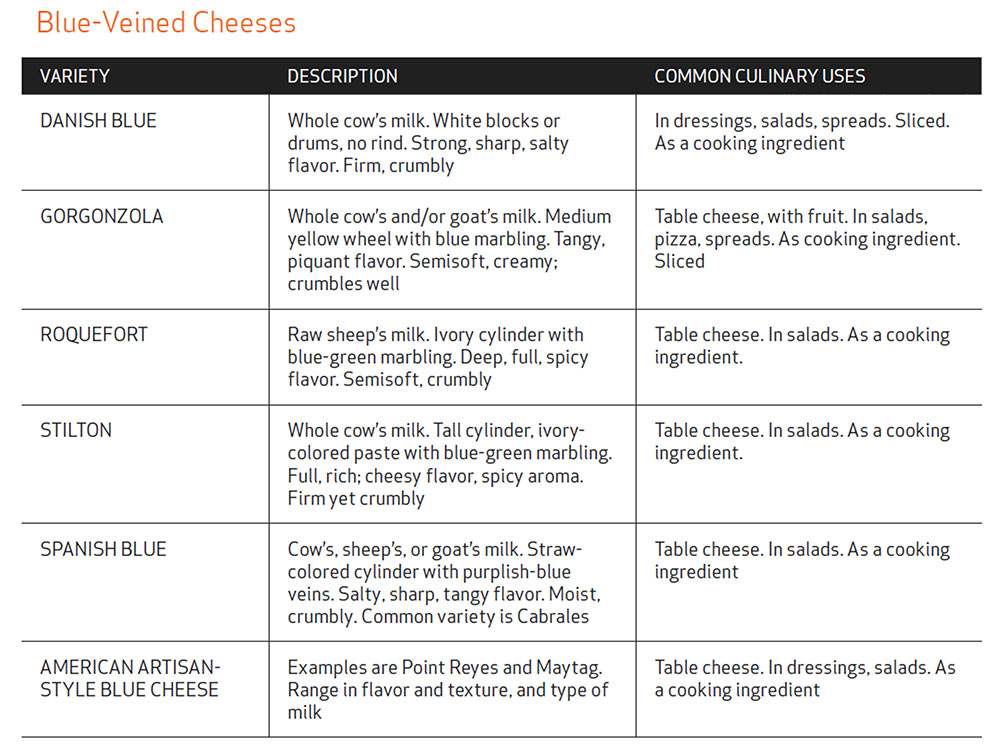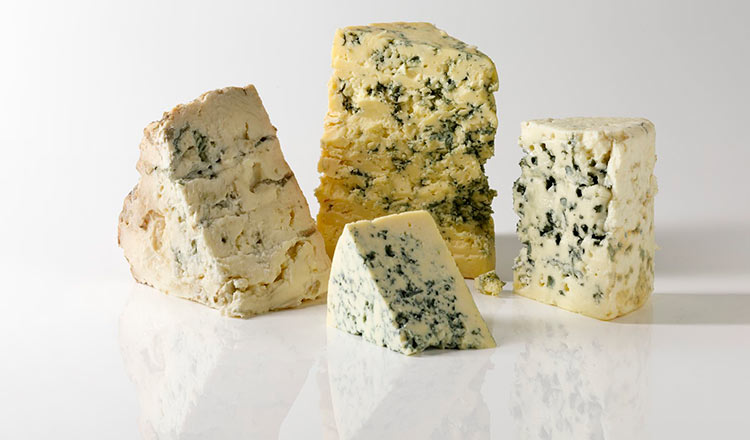Blue or blue-veined cheeses are thought to have been among some of the first cheeses produced. Although there is no specific research to prove the theory, it is believed that the mold was first introduced to cheese from moldy bread that had come in contact with the cheese.
In the modern production of blue cheeses, needles are used to form holes that allow gases to escape and oxygen to enter to support mold growth within the cheese. The cheese is then salted or brined and allowed to ripen in caves or under “cave-like conditions.”
Some of the most famous blue cheeses are Roquefort, Gorgonzola, Stilton, and Maytag blue. Roquefort is made strictly from raw sheep’s milk and has been made since ancient times in the Rouergue area of southern France. Today the cheeses are still ripened in the caves of Cambalou for three months to develop their unique character. They may be eaten after the initial ripening, but are more typically stored for an additional three to twelve months, as the market allows.
One of the things that makes Roquefort unique is the fact that the mold used to ripen it is not grown in a laboratory, as are molds for many other blue cheeses. Instead, Roquefort mold is developed naturally from rye bread. Roquefort, should, therefore, be emphasized, or at least be mentioned, whenever the cheese is served or used in cooking.
Gorgonzola is another special blue cheese. Unlike Roquefort, Gorgonzola is made from cow’s milk. Its mold is from a completely different strain, which is now commercially produced. Gorgonzola is made with evening milk and the following day’s morning milk. There are two varieties available: “sweet,” which is aged three months; and “naturale,” which is aged further and has a fuller, more robust flavor.



